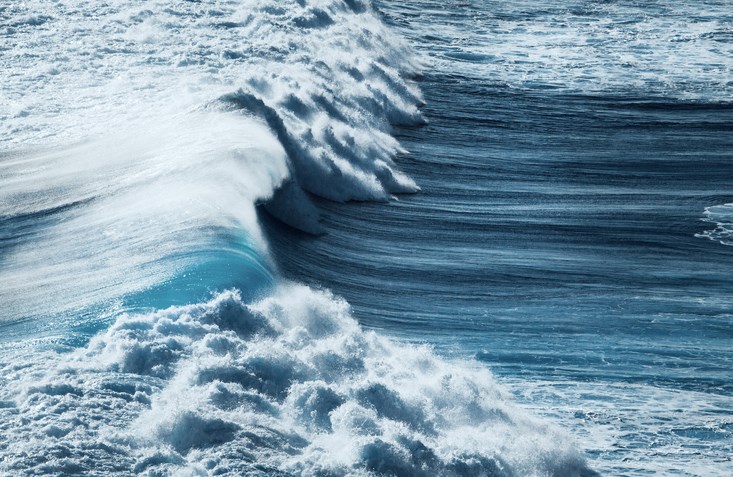There will be some interesting lunar action this December as Venus makes a close approach.
The new moon will occur very early on Dec. 4 and will pass below Venus, less than three degrees away, then by Saturn and Jupiter successively Dec. 7 through Dec. 9. The close pass by Venus will be neat for anyone with a decent telescope – you’ll be able to see the moon as a thin crescent and a remarkably similar-looking thin crescent of Venus about one fiftieth the size of the moon.
By about Christmas Day, Venus will appear lower in the southwest just after sunset as it heads west to pass between us and the sun (inferior conjunction) on Jan. 8. Mercury will join Venus over the next two weeks as Mercury moves east and out from behind the sun. Their closest approach will be about three degrees on Dec. 28. By Jan. 8, Venus will be only 0.266 astronomical units (the Earth-sun mean distance) from Earth and just more than one minute of arc in apparent diameter – one thirtieth the size of the moon. This is discernible even with a pair of 7 x 30 binoculars as a reasonably large but very thin crescent. The convenient part is that, since Venus’ orbit is tipped to our own, it will pass about five degrees north of the sun and will be visible for a week or two both in the evening in the southwest and the morning in the southeast.
Something we’re all looking forward to: the winter solstice occurs at 0859 on Dec. 21 and the days begin to get longer.
One other neat thing about this month is that the new moon and lunar perigee – closest approach to Earth – occur only three hours apart on Dec. 4. As well, Earth’s perihelion – closest approach to the sun – occurs on Jan. 3. This means that on Dec. 4, the moon is just about as close as it gets to the Earth and the Earth is nearly as close as it gets to the sun. Since all three are in a nearly straight line all of the tidal effects add up. When two objects orbit each other gravitationally, they each have a gravitational field that decreases as the square of the distance away from each. That means that each body sees a slightly stronger pull of gravity on the side facing the other body and slightly weaker on the side opposite. Since Earth has liquid oceans, they will bulge slightly toward the moon when it’s overhead; on the side farthest away, they see a slightly lower pull from the moon so they bulge away from the moon.
As the TV advertisers say: “But, wait, there’s more!” The oceans also respond to the sun’s gravitational field in the same way. As far as I can figure out (and I’m hitting the limits on my long, long ago math degree), the tidal forces vary as the mass of the attracting body divided by the cube of its distance. If you look up all the mean values for the sun and the moon, you get values of 594 for the sun and 1,288 for the moon. Units are metric tons per cubic kilometre, whatever that actually means. Anyway, the ratio means that the sun exerts a tidal force on the Earth of about 46 per cent of that of the moon. For the Dec. 4 new moon, however, the tidal forces rise to 621 and 1,618 for sun and moon, respectively; this is a total of about 19 per cent greater tidal forces than average. The remaining complication is that the tidal bulges are at their peaks in the plane of Earth’s orbit; in our winter they’re near the Tropic of Capricorn sunward and the Tropic of Cancer away from the sun. That means we’ll see a big variation from day (lower) to night (higher). We seem to see the greatest range about two to three days after the new and full moon for reasons I don’t understand. But, I’d say we can expect some awesome tides the night of Dec. 6. We’ll see pretty much the same in early January too; a little more from the sun and a bit less from the moon.
The remaining complication is that the shape of our coastlines and ocean depths can hugely affect tides. Best examples: Bay of Fundy and Cook Inlet in Alaska (leads to Anchorage). In both cases, the shape and depths of each leads to a resonance period just about the same as the lunar tidal period so the water sloshes in and out like a kid on a swing in time with the moon’s pull. The whole subject is the sort of thing that highly nerdy careers are made of.
Bruce Fryer’s presentation on this and other subjects can be watched on YouTube by entering Sunshine Coast Astronomy in the search line. I found it excellent and will recommend any of the stuff on the channel. The next online Sunshine Coast Astronomy Club meeting is Dec. 10 at 7 p.m. Signup information will be available at sunshinecoastastronomy.wordpress.com.



